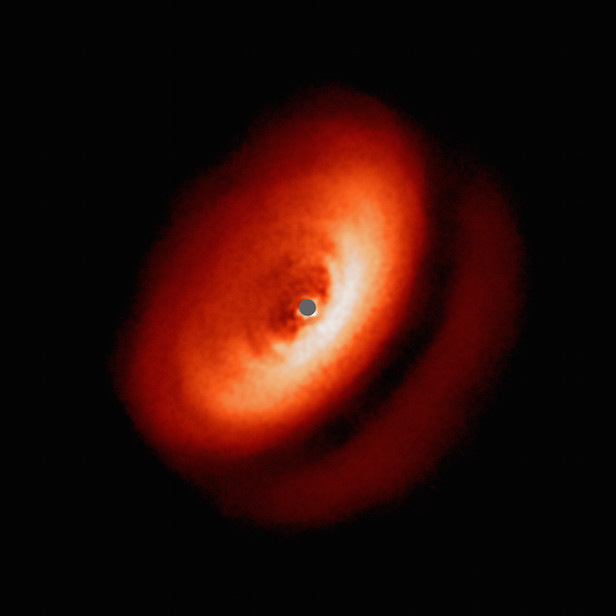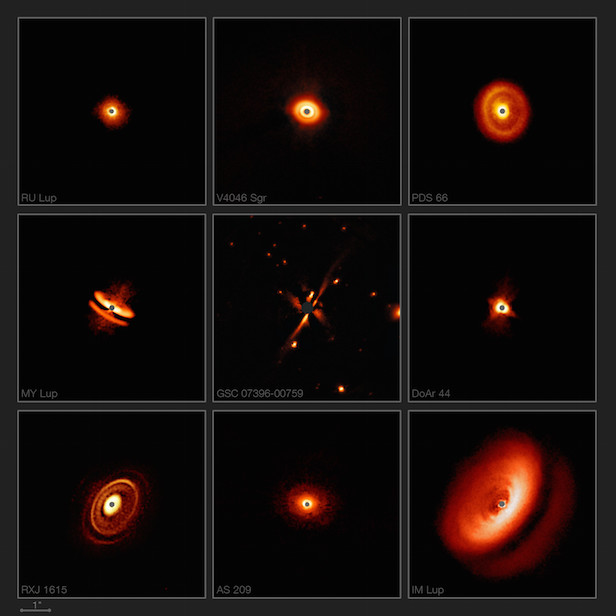Protoplanetary discs finally seen in unrivalled detail
Courtesy of a Very Large Telescope instrument, there has now been an influx of fantastic images unmasking the dusty discs that surround young stars

The disc around IM Lupi is shown in spectacular detail, emphasises the clarity of the SPHERE instrument. Image credit: ESO/H. Avenhaus et al./DARTT-S collaboration
The European Southern Observatory (ESO)’s Very Large Telescope (VLT) has released stunning new images revealing several dusty discs surrounding nearby young stars in unprecedented detail. There is an unusual variety of shapes, sizes and structures that appear in these new images, as well as the likely effects of planetary formation. Images reveal a lot about the making of planets in their early years, and could even help reveal how our Solar System came to what it is now.
At the Paranal Observatory in Chile, the VLT can be found and attached to the telescope is the pristine Spectro-Polarimetric High-Contrast Exoplanet Research Instrument (SPHERE) instrument. SPHERE has the rare capability to suppress the bright light of nearby stars in order to gather a clearer view of the regions surrounding them. These new images are only just a selection of the wide range of dusty discs found around young stars.
These discs appear to vary greatly in shapes and sizes. Some of the discs contain bright rings, other dark rings and there are even the odd ones that resemble a hamburger. The orientation of these discs from Earth plays a large part to their perceived appearance, as we could be viewing these discs edge-on, which would appear narrow, or face-on, which would render a fuller and circular view.

These images show just some of the dusty discs seen by the SPHERE instrument. Image credit: ESO/H. Avenhaus et al./E. Sissa et al./DARTT-S and SHINE collaborations
The primary task of SPHERE is to discover and analyse giant exoplanets orbiting nearby stars via direct imaging. Because of this unique capability, it is also well suited for the task of directly imaging protoplanetary discs. Many stars that appear in this study are T Tauri stars, which is a class of extremely young stars – no older than 10 million years old – and tend to vary in brightness. The discs that surround T Tauri stars consist of primordial gas, dust and planetesimals, which are the building blocks for planets. Learning as much as possible about these regions can tell us about the formation and evolution of planets in other systems, as well as the early stages of our own Solar System, more than four billion years ago.
These images have come about as part of the Discs Around T Tauri Stars with SPHERE (DARTTS-S) survey. The targets in this survey were between 230 and 550 light years away from Earth, relatively close when compared to the size of the Milky Way, which is 100,000 light years across. However, even at these distances it is hard to gain sufficient images of the faintly lit discs, outshone by its host star.
Another of SPHERE’s recent observations discovered an edge-on disc around the star GSC 07396-00759, found as part of the Sphere Infrared Survey for Exoplanets (SHINE) survey. The red dwarf is part of a multiple star system that was also included in the DARTTS-S survey, but its newly studied disc appears to be much more evolved than the gas-rich disc that surrounds the T Tauri star in the same system. With both of these stars being the same age, astronomers are puzzled by the evolutionary differences between the two discs, with more studies pencilled in to uncover why.
Keep up to date with the latest reviews in All About Space – available every month for just £4.99. Alternatively you can subscribe here for a fraction of the price!




